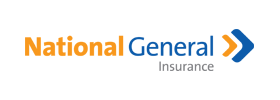How can you be assured that your adult kids remain friends after your death? Or that your young children are taken care of as you wish? Write your will and do it soon.
A will is a legal instrument that spells out to whom your assets are to be distributed when you die. It also names an executor, who is in charge of making sure your wishes are carried out. And, in many places, it is the only legal way to designate a guardian for a minor child.
Because life is an ever-changing affair, wills should be rewritten periodically to reflect changes that occur in your life. Rewrite your will when:
1 You get married.
2 You have children.
3 You get divorced.
4 You inherit money.
5 Your net worth substantially increases.
6 A beneficiary dies.
7 You move to another state.
The first step in considering your will is to take a financial inventory of your assets, debts, life insurance policies and property you own. Next assemble your legal profile including copies of prenuptial agreements, divorce decrees, trusts, business partnership agreements and so on.
Then collect the names and addresses of beneficiaries, including your favorite charities and the name and address of the person you designate as executor.
Something else to consider is a living will. It provides instructions in the event that you become seriously ill and can’t make your own medical decisions. It should tell your wishes about the use of life-sustaining respirators and medications and under what conditions you would want to be resuscitated.
Deciding who gets what after you die is not a pleasant task, but it’s better than letting someone else decide.
When is home insurance a requirement?
Anyone that lives in the Cypress, TX area should consider purchasing their own home. When you are a property owner in this area, you can benefit a range of different ways. While there are a lot of advantages that come with buying a home, you need to understand your insurance requirements. There are several situations when you will need coverage.
When Taking out a Mortgage
One situation when you will need to get home insurance is when you pledge your loan as collateral to another party. If you take out a mortgage, a home equity line of credit, or another type of loan, the lender will want to make sure that their collateral is secure. The best way that they can do this is by ensuring you have home insurance at all times. It is important to work with your lender to fully understand their home insurance requirements.
When Moving into an Association
Another situation when you will be required to take get a home insurance policy is when you are going to move into an area that has a home association. If you move into an area with an association, the local document and regulations will require that you carry insurance at all times. This will provide assurances to the association that you can handle any liability claims and repair your home when necessary.
Ultimately, picking a new home insurance policy is always going to be a big decision. For those that are in the Cypress, TX area, and are looking for insurance, InsureUS is a great company to contact. The team at InsureUS excels at helping property owners understand all of their needs and options. This will help ensure you have a guide that can allow you to pick a policy that provides you with the right coverage.
The six myths of financial planning
Many people may not realize that they could benefit from financial planning. The Institute of Certified Financial Planners says these are the most common misconceptions people may have:
Myth No. 1: Financial planning is for the wealthy. It’s not about “getting wealthy” either, but that could happen. It is about achieving short-term and long-term financial goals, about taking control of your financial life.
Myth No. 2: Financial planning is about investing. That’s part of it. Financial planning is considering all financial aspects of your life: Taxes, insurance, retirement, budgeting and life goals. It makes those aspects work together efficiently. You must have a balance of all these.
Myth No. 3: It’s not needed until you’re older. Wrong. The best time to start is when you are young. The older you are, the fewer opportunities you may have. For every 10 years you delay saving for retirement, you have to save three times as much a month in order to end up with the same size retirement nest egg.
Myth No. 4: Financial planning requires a lot of work and a big plan. Not necessarily. Any worthwhile plan should consider your overall needs and situation. If you need help, see a financial planner for advice. It’s valuable as you calculate retirement, education and other goals.
Myth No. 5: It is a one-time effort. Financial planning is a lifelong process. A plan must be periodically reviewed and updated as children are born, jobs are changed, or investment needs are changed.
Myth No. 6: You can get along without planning. Sure you can, but it is much better to take charge of your life than to just get along.
Three strategies if you are worried in the current crisis
Wild. That’s the ride of the stock market today. Up 500, down 1,000. Every day it is a new shock. You look at your holdings and a sign flashes in front of your eyes: DANGER. DANGER. DANGER.
But don’t panic.
Here are three ways to think about it:
- Don’t look.
If you have 30 years to go before retirement, just don’t look at your 401(k) numbers. Just don’t. Keep contributing. You have years for the market to rise and it will. Don’t look. Don’t sell. Keep putting money in. - Breathe deeply and peek.
If you are a couple years from retirement, take it easy. Even in your 60s, you are still a long-term investor. However, you might want to rebalance your assets. As you near retirement, maybe fewer stocks are best along with other more secure investments. But, on the other hand, if you think the current crisis will pass quickly, just breathe.
What you can do before retirement, is make sure you don’t have credit card debt, but do have a stash of emergency cash.
Don’t make any hasty moves. Talk to a financial advisor. - Breathe, peek, and maybe put off that vacation.
If you are retired in the current crisis, you’ve seen that fat load of earnings of the last two years circle the drain. Everyone has. It is not just you. But, yeah, you’re retired.
Don’t panic.
Maybe don’t draw from the IRA to pay for that fancy vacation. Sorry. Should have done that last year.
Have a little gratitude. You probably lived free on earnings for the last year or two.
Talk to your investment advisor about risk and rebalancing. But it is not a good time to sell. You know what legendary investor Warren Buffet once said when asked if he lost money during the drop: No, he said, I didn’t sell.
Emergency fund: Did the Covid crisis convince you?
One day in March millions of people found themselves out of work with no paycheck coming in.
The Covid crisis hit everyone at the same time and it convinced many to start an emergency savings fund.
If you look up the subject, you see a daunting suggestion: Save 6 months of your expenses. Or a year. It sounds unlikely, if not impossible.
But even one month of expenses, or two, could have saved most people a lot of trouble. Thinking about it that way may seem more doable.
Money experts say to be successful you have to:
- Make your savings automatic.
- Put them in a high-interest savings account.
- Put a manageable amount of money in and keep putting it in.
Yet, to make savings stick in place, you have to define what is and what is not an emergency. Loss of paycheck, for whatever reason, is one emergency. On the other hand, suddenly remembering your car insurance is due is not an emergency.
Before you start your emergency fund, look over your checking account and write down those many chunks of money you have to come up with quarterly or bi-annually: Insurance of all sorts, vacation money, school fees, and the like. Those are not emergencies. They are recurring expenses.
Consider starting two funds. One fund in a savings account at your bank for recurring expenses. One fund in an online, high-interest savings account for long-term emergencies.
At just $10 per week, you can save more than $500 in a year. That gets your fund started.
With another $10 a week, you give your recurring expenses a boost, too.
Any time you get an unexpected chunk of money, put 20 percent in savings. Resolve not to let wants interfere with what you need.
Buying and selling in the temporary normal
With all of this extended time spent homebound recently, many of us have discovered a new truism: if you have to be quarantined, you might as well do it in your dream home.
No matter what — the season, the economy, even a virus — people will continue to buy and sell houses. It’s only the process that changes. And buyers and sellers who can adapt and pivot are the ones who come out ahead.
Fortunately, real estate professionals are already adept at strategies that could prove especially helpful this year, as COVID-19 dominates the news.
Think: technology. Virtual tours will likely increase in popularity. Buyers were already screening houses online before seeing them in person, and a thorough virtual tour could dramatically increase the number of eyes on your property.
A 2018 report by the National Association of Realtors (NAR) said that 46 percent of buyers found a virtual tour very useful, while 74 percent used the internet to search for homes. Among millennials, that figure leaped to 92 percent.
Some other accommodations this year could include:
- Sellers may request more hand-washing. Another NAR survey, this one in March, found that more sellers were requesting that visitors wash their hands or use sanitizer. (Some may also request the use of booties, a commonplace request already.)
- Open houses may limit the number of people inside a home at one time – which probably makes for a more pleasant walk-through anyway.
- Technology can also aid in brokering a deal. Already, contracts are regularly sent via email and signatures can be gathered online. Expect more of this.
- Those who attend open houses in the coming months are more serious buyers, as the tire-kickers have opted to stay at home.
What auto insurance options are offered for Texas drivers
In Texas, the law requires all motorists to show proof of financial responsibility if they are involved in an accident while driving. This minimum coverage includes liability auto insurance which will pay to repair the other driver’s car if you cause an accident. It also pays the medical bills and some other expenses of the other driver and his or her passengers. You must have at least $30,000 of coverage for injuries per person and up to a total of $60,000 per accident. You must also have at least $25,000 of coverage for property damage. This is called 30/60/25 coverage.
Many drivers in Texas also carry uninsured and underinsured motorist coverage which means if you are involved in an accident caused by someone who doesn’t have insurance or they don’t have enough insurance to cover your medical bills and car repair bills, this policy will kick in and cover you. It also covers your vehicle if you are the victim of a hit-and-run accident and do not know who the other driver is.
You may also ask for more auto insurance coverage, such as collision insurance. This pays to repair or replace your vehicle after a crash no matter whose fault it is and comprehensive auto insurance pays to replace your car if it is stolen or damaged by some kind of disaster, such as a fire, flood, or vandalism. Personal injury Protection coverage and medical payments coverage are similar and will pay you and your passengers’ medical bills. Personal injury protection also pays you for things like lost wages and other non-medical costs if you are involved in a crash.
There are many add-ons to insurance policies that you can obtain, such as towing and labor coverage to get your vehicle fixed when it is undrivable and rental reimbursement coverage that allows you to pay for a rental car if your vehicle is stolen or while it’s being repaired after an accident.
Enlisting the help of an experienced and knowledgeable insurance agent is the best way to find out which auto insurance coverages you need for you and your situation. The insurance agents at InsureUS in Cypress, TX are ready to serve you and all of your auto insurance needs. Call for an appointment today!
Relief for 401(k) withdrawals
The new coronavirus relief bill relaxes rules on 401(k) withdrawals for those affected by the virus.
Savers would be able to take a hardship distribution of up to $100,000 from their 401(k) accounts without a 10 percent early withdrawal penalty. That works for those who are laid off and want the money for mortgage payments, for example. Warning: withdrawals are not tax free.
Retirees who don’t need distributions from their accounts can suspend the required minimum for all of 2020.
Many retirees have found that the value of their accounts has dropped dramatically. Leaving money in place allows their investments to recover as the virus crisis eases and the economy recovers.
The withdrawals are not tax-free, however; the bill gives you three years to pay the taxes on the withdrawals, according to CNBC.
Relief Bill: How should I use the money?
In late March, the U.S. Congress passed a $2 trillion economic rescue plan, dubbed the CARES Act, to provide relief to Americans impacted by the COVID-19 pandemic.
The bill included cash payments to individuals, increased unemployment insurance benefits, changes to student loans and to retirement account rules, among others.
The amount of the payments varied by income, but most people fell into these categories: single adults with an adjusted gross income of $75,000 or less would receive $1,200, while married couples with no children who are earning $150,000 or less would receive $2,400. An additional $500 per dependent was also included. You do not have to pay income tax on the payment.
If you’re in a situation where you have a choice how to spend it (i.e. you’re able to use it for discretionary purposes instead of rent/mortgage/food), what should you do? Market Watch had some ideas after polling financial experts:
- Put it into an emergency fund account. A rainy-day account should cover three to six months of expenses and some online savings accounts can offer annual percentage yields of 1.5 to 1.7 percent.
- Pay down debt. Experts recommend putting it toward high-interest debt like credit cards and waiting on student loans to see what might come of other relief efforts.
- Invest – but cautiously. True, some people can benefit from a quick flip. No one but a trusted investment advisor should recommend stocks. But some ideas are equities, a long-term strategy; investing in companies like virtual learning, grocery stores, and Esports; or even an exchange-traded fund (ETF), which is a basket of securities that you can buy and sell through a broker.
- Donate. If you’re in a position to donate some of your payment, food banks and other charities will need an influx for some time. Animal charities expect to be hard hit as their donors scramble to shore up their finances.
Get some social distance with a bike ride.
It’s commuting and fitness melded together: Faster than walking and as much exercise as jogging. It lets you enjoy the scenery, which, depending on your time in quarantine, could mean a lot.
If you aren’t already a regular rider, you’ll want to ease yourself into cycling. Begin with half-hour rides every other day or three days a week. And practice your basic skills in an empty parking lot. Learn to shift gears without wobbling and to look over your left shoulder while steering straight ahead.
When you take to the roads, always ride with traffic, ride in the street on the right. Use hand signals and obey all the traffic rules.
Buying a bike
If you decide that you like riding, you may want to get a new bike. Be sure to shop for one that suits your normal riding distance. Traditional 3-speeds are good for short rides, and 10-speeds are best for longer rides. Then there are all-terrain bikes that provide an all-purpose alternative.
When riding to work, put your belongings in a backpack or tie them down in a basket or rear carrier. Carry a tool kit to fix flat tires.
You’re never too old to take up cycling and benefit from it for the rest of your life. Studies at the University of California at Davis compared three forms of exercise: Jogging, bicycling and tennis. Middle-aged sedentary men were assigned to one of the three activities for 30 minutes a day three times a week. After 20 weeks, the joggers and cyclists had an equal improvement in endurance, and both groups lost a substantial amount of body fat.
When riding after dark, make sure you have lights on the bike, reflective tape on your helmet, and wear light-colored clothing.







































